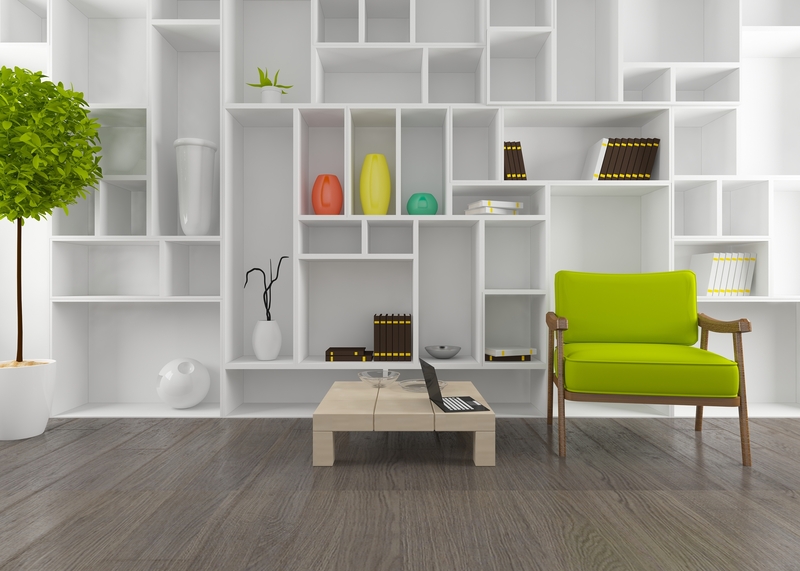Expert Tips on Moving a Piano Safely and Why DIY Can Be Risky
Moving a piano is far more complicated than just shifting a piece of heavy furniture. With hundreds of delicate components, significant weight, and an array of shapes and sizes, piano relocation demands a specialized approach. Many homeowners contemplate handling the job themselves to save money or time, but moving a piano is filled with risks that could lead to damage, injury, or costly repairs. In this comprehensive article, you'll discover the best expert tips on moving a piano safely, learn why a DIY approach can be hazardous, and understand when it's imperative to hire professional piano movers.

Understanding the Challenges of Moving a Piano
Pianos are intricate, valuable musical instruments. They can weigh anywhere from 300 pounds for small uprights to over 1,200 pounds for concert grands. Beyond their heft, their delicate internal and external structures mean even slight mishandling can spell disaster. Here are some detailed reasons why moving a piano is uniquely challenging:
- Irregular Weight Distribution - Pianos aren't evenly weighted; their majority mass lies in the cast iron harp, which is often positioned towards one end.
- Sensitive Internal Mechanism - The instrument contains 10,000+ moving parts, making it especially susceptible to bumps or sudden movements.
- Odd Shapes - Whether it's a grand or upright, the size and design make handling awkward, especially when navigating stairs or tight doorways.
- Risk to Floors and Walls - Even minor slips can result in scratches, dents, or gouges in your home.
- Physical Danger - Due to their size and weight, improper lifting can cause severe bodily harm.
Why Choosing DIY Piano Moving Is Risky
With the abundance of online tutorials and moving equipment for rent, it's understandable that homeowners may consider a do-it-yourself approach. However, DIY piano moving comes with significant risks:
1. Potential for Severe Injury
- Heavy lifting can cause strained backs, slipped discs, and broken bones.
- Pianos can tip or fall, risking finger, foot, and leg injuries.
2. High Probability of Damage to the Piano
- A sharp jolt or drop may damage keys, strings, or the soundboard.
- Exterior finish scratches or chips reduce the piano's value and aesthetics.
- Climate changes during a move can harm the instrument's tuning and internal structure.
3. Likelihood of Home Damage
- Walls, banisters, doorways, and floors can be scarred or destroyed during movement.
- Improper equipment usage increases the chances of property damages.
4. Insurance and Liability Issues
- Most homeowner's insurance doesn't cover self-inflicted damages during a move.
- Injury to helpers or friends could create personal liability concerns.
Pre-Move Preparation: Steps Before Piano Moving
Whether you plan to hire professionals or attempt the process yourself, thorough preparation is key to a safe piano move. Below are necessary steps to ensure readiness:
1. Measure Everything
- Start by measuring the piano's dimensions: height, width, and depth.
- Measure all doorways, stairs, elevators, and hallways along the planned route.
- Clear pathways of rugs, picture frames, or furniture that could obstruct movement.
2. Gather the Right Piano Moving Equipment
- Furniture Dollies - Heavy-duty, padded dollies designed for the piano's shape and weight.
- Moving Blankets and Pads - To protect both the finish and delicate components.
- Straps and Tie-Downs - For securing the piano to the dolly and inside the moving truck.
- Piano Skid Board - Essential for grand pianos, which must be placed on their side.
- Quality work gloves for grip and hand protection.
3. Assemble a Skilled Team
- Never attempt to move a piano alone. Gather at least 3-5 strong, able-bodied helpers.
- Assign clear roles: lifting, guiding path, opening doors, and spotting hazards.
- Communicate using specific commands for lifting and turning.
Step-by-Step Guide: How the Experts Move a Piano
Even with best practices, moving a piano always carries some risk. However, professional piano movers follow specific steps to minimize that risk and ensure the instrument's safety:
1. Inspect and Secure the Instrument
- Close and lock the keyboard lid to protect the keys.
- Remove all accessories (lamps, sheet music, decorations).
- For grand pianos, detach the legs and pedals following the manufacturer's instructions.
2. Pad and Wrap Thoroughly
- Use soft moving blankets to wrap the entire piano, taping them in place to prevent shifting.
- Pay extra attention to corners and legs for full protection.
3. Proper Lifting Techniques
- Always lift from the strongest points - never from legs, as they can snap under the piano's weight.
- Lift with your knees, not your back, and keep the instrument close to your body.
- Avoid tilting or rotating the piano abruptly.
4. Navigating Doors and Stairs
- Assign a leader to spot hazards and a "tail" to guide from the rear.
- Move slowly - pausing frequently to reassess strategy and avoid fatigue.
- Use ramps or stair-climbing dollies when available for added stability.
5. Loading and Securing in the Moving Truck
- Choose a truck with a lift-gate for easier loading/unloading.
- Position the piano against the wall of the vehicle, securing it with straps.
- Place padding around the instrument to prevent jostling during transit.
Additional Safety Tips for Piano Moving
- Wear proper footwear with non-slip soles.
- Keep pets and young children away from the moving area at all times.
- Monitor the piano carefully for shifts - especially in inclines or declines.
- Never rush. Haste leads to mistakes and accidents.
- Have a toolkit handy for emergency repairs or furniture disassembly.
Why You Should Hire Professional Piano Movers
While DIY piano moving may seem feasible, there are compelling reasons why professional piano movers are the best choice:
1. Specialized Training and Techniques
Professional movers have in-depth knowledge of various piano makes and models. Their training ensures careful handling that minimizes risk to both the instrument and your property. They know the right angles, lifting points, and have experience maneuvering through challenging spaces.
2. Proper Equipment
Moving companies invest in specialized gear - from custom skids to hydraulic lifts - that most DIYers don't have access to. This equipment is designed to protect your piano and home during every stage of the move.
3. Insurance and Liability
Reputable movers offer insurance coverage for your piano and team, so you aren't left shouldering the cost of repairs or medical bills in the event of an accident. This peace of mind is invaluable, especially with valuable or antique instruments.
4. Time and Stress Reduction
Piano moving is hard work. Professional movers streamline the process, allowing you to focus on other important aspects of your move. Their efficiency also reduces total moving time and prevents unnecessary delays.
Post-Move Piano Care
Once your piano is safely delivered, a few essential steps will help maintain its condition and performance:
- Allow the Instrument to Acclimate - Give your piano several days to adjust to the new room's temperature and humidity before tuning or playing extensively.
- Schedule a Professional Tuning - All pianos require tuning after a move, as vibrations and climate shifts can alter pitch and harmony.
- Inspect for Damage - Check for external scratches, chipped legs, or changes in key action or pedal response. Address issues promptly with a piano technician.
- Maintain Proper Humidity - Use a humidifier or dehumidifier to keep levels between 40% and 50% to prevent wood warping or cracking.

FAQs: Common Questions About Piano Moving
How much does it cost to move a piano?
The cost depends on the piano's size (upright, baby grand, concert grand), the distance of the move, accessibility, and any special requirements (stairs, elevator, tight hallways). On average, professional piano moving ranges from $150 to $1,000. Specialty moves may cost more.
Is it ever safe to move a piano myself?
Moving a very small upright across a room on flat flooring with several strong adults may be feasible. However, anything involving stairs, tight corners, or long distances should always be done by experts. When in doubt, hire professional movers.
Can a standard furniture mover handle a piano move?
Not all moving companies are equipped or trained to handle pianos. Be sure to hire specialists who can provide references and proof of expertise in piano logistics.
Will moving a piano affect its sound or condition?
Yes. Even when well-handled, moving can alter tuning and cause slight shifts in the action. That's why post-move care is vital for maintaining the piano's musicality and longevity.
Conclusion: Protect Your Piano, Protect Yourself
Moving a piano is a job that should never be taken lightly. The risks to both the instrument and your personal safety are simply too great when attempting a DIY move. By following expert tips and hiring experienced piano movers, you'll safeguard both your valuable instrument and your peace of mind.
If you have an upcoming piano move, consider these guidelines carefully. Taking the right steps today will ensure your piano's timeless beauty and sound quality continue to enrich your home for years to come.
Related Keywords:: piano relocation, moving a piano safely, piano moving tips, risks of DIY piano move, expert piano movers, professional piano moving.



